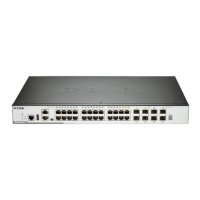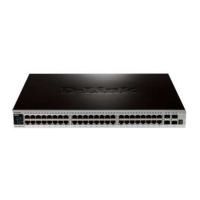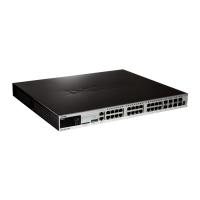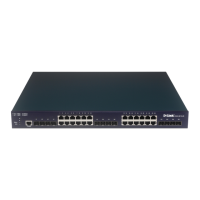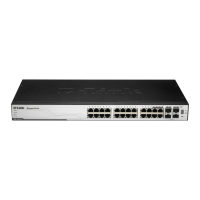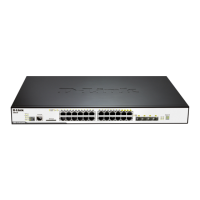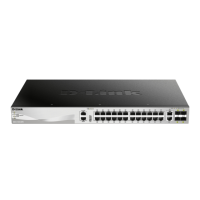DGS-3630 Series Layer 3 Stackable Managed Switch Web UI Reference Guide
525
To view the following window, click Security > SSH > SSH Server Connection, as shown below:
Figure 9-92 SSH Server Connection Window
SSH User Settings
This window is used to display and configure the SSH user settings.
To view the following window, click Security > SSH > SSH User Settings, as shown below:
Figure 9-93 SSH User Settings Window
The fields that can be configured are described below:
Parameter Description
User Name
Enter the SSH user’s username used here. This name can be up to 32 characters
long.
Authentication Method
Select the authentication methods used here. Options to choose from are
Password, Public Key, and Host-based.
Key File
After selecting the Public Key or Host-based option as the Authentication
Method, enter the public key here.
Host Name
After selecting the Host-based option as the Authentication Method, enter the
host name here.
IPv4 Address
After selecting the Host-based option as the Authentication Method, select and
enter the IPv4 address here.
IPv6 Address
After selecting the Host-based option as the Authentication Method, select and
enter the IPv6 address here.
Click the Apply button to accept the changes made.
Enter a page number and click the Go button to navigate to a specific page when multiple pages exist.
SSL
Secure Sockets Layer (SSL) is a security feature that will provide a secure communication path between a host and
client through the use of authentication, digital signatures and encryption. These security functions are implemented
through the use of a cipher suite, which is a security string that determines the exact cryptographic parameters,
specific encryption algorithms and key sizes to be used for an authentication session and consists of three levels:
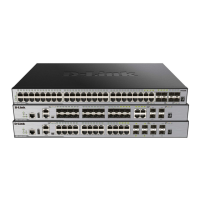
